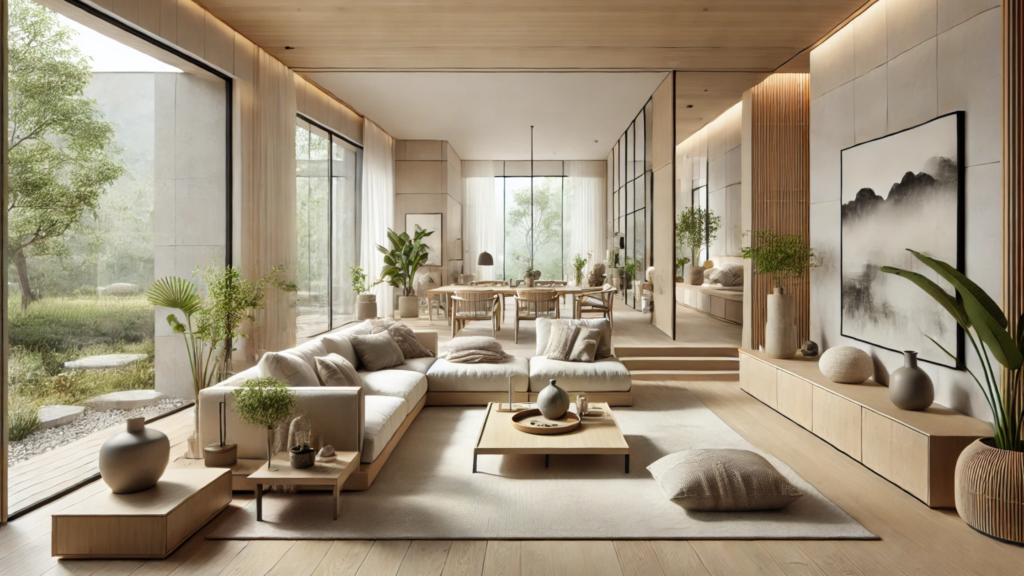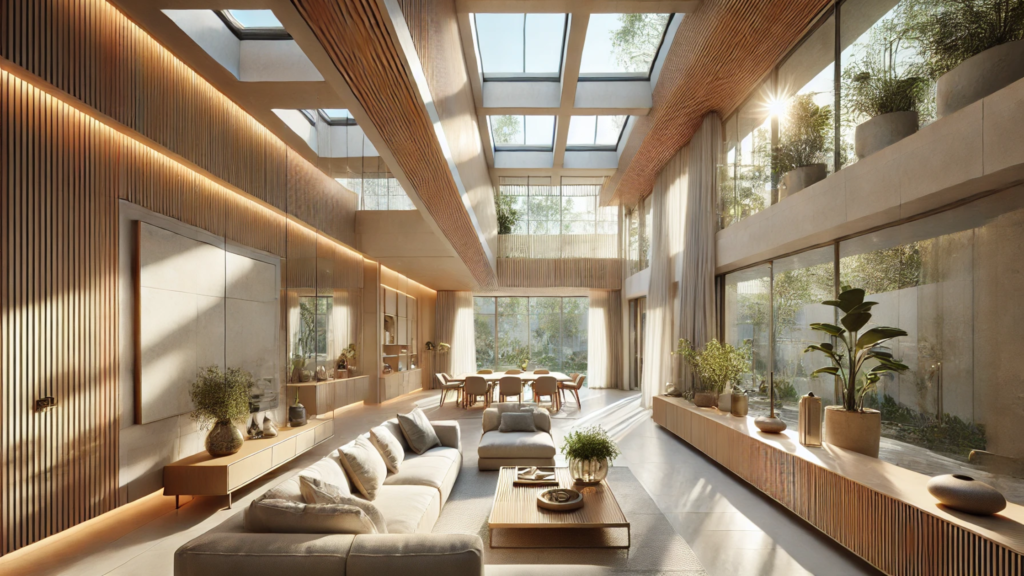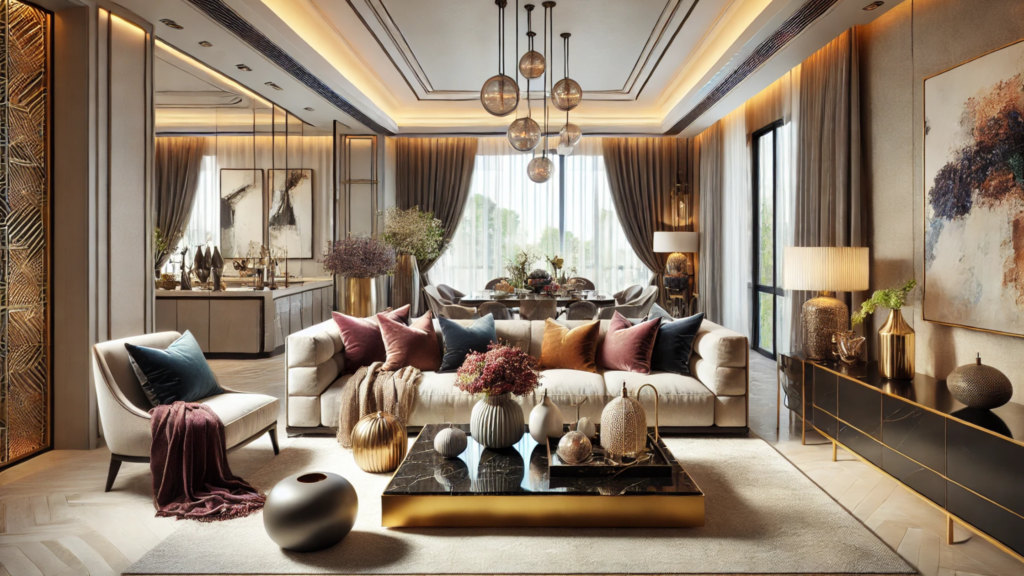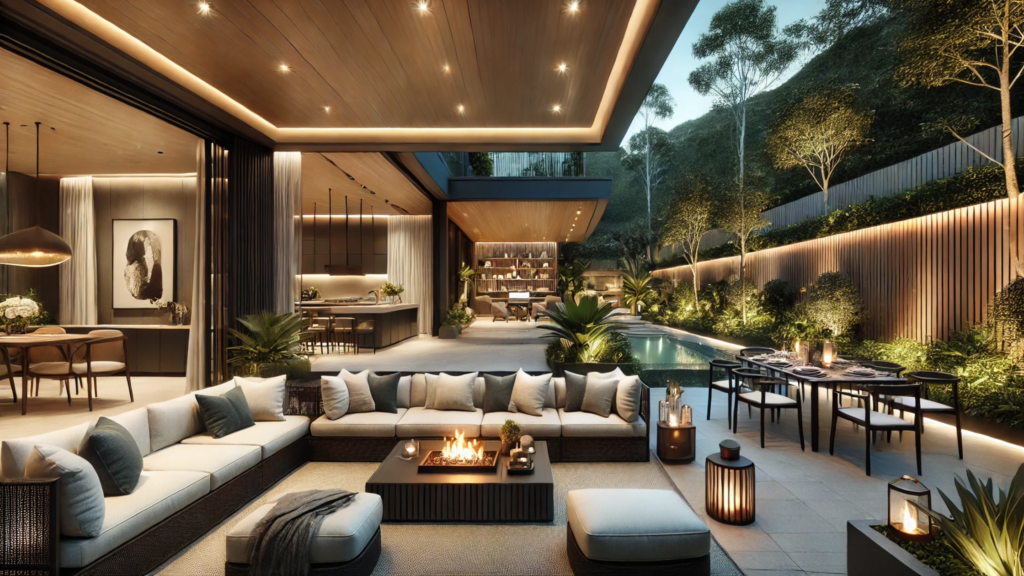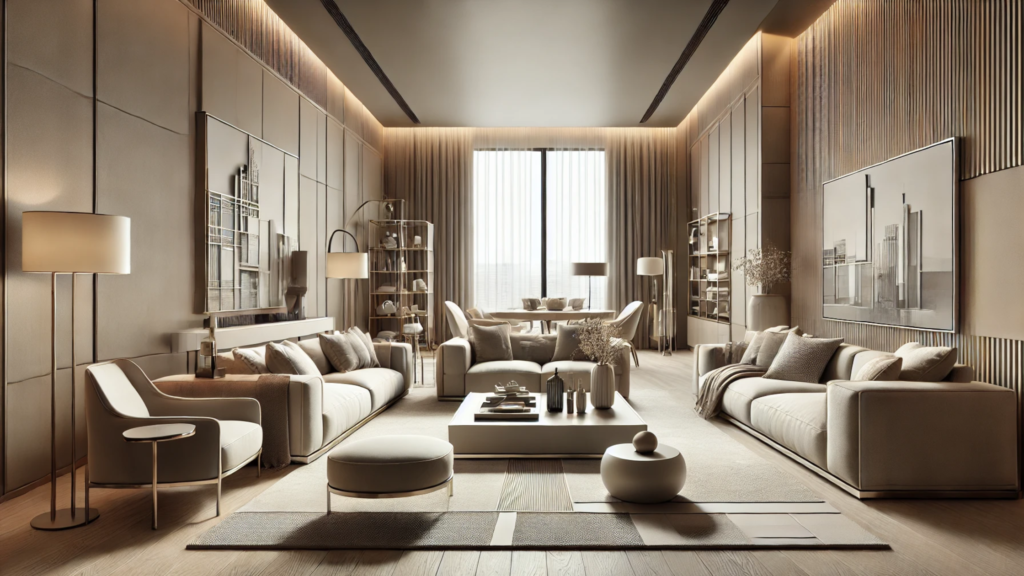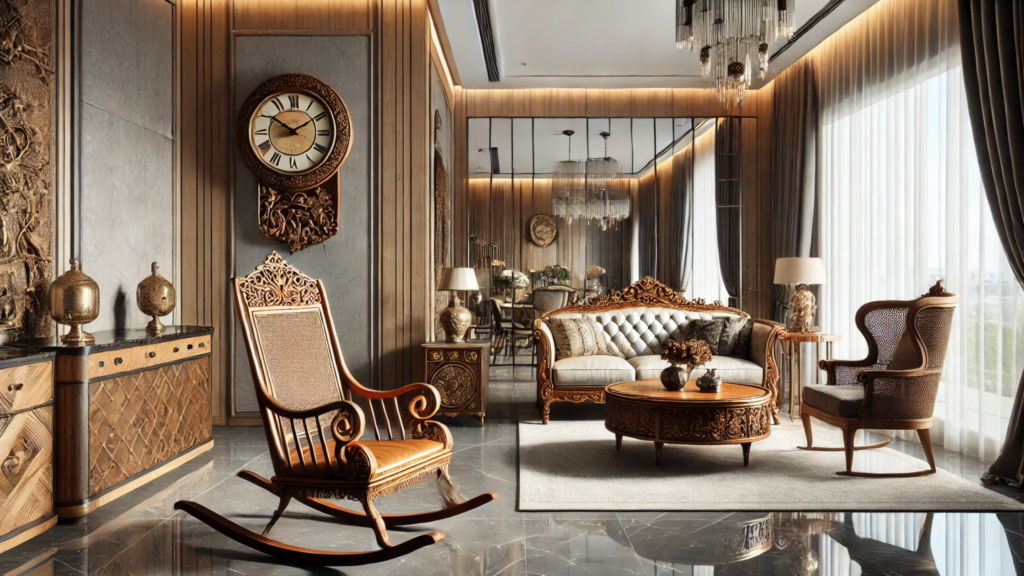Japandi Style: Interior Design
Japandi Interior Design: The Fusion of Japanese Minimalism and Scandinavian Cosiness Japandi interior design is a harmonious blend of two distinct yet complementary design philosophies: Japanese minimalism and Scandinavian cosiness. This style marries the sleek, clean lines and uncluttered spaces typical of Japanese design with the warm, inviting, and functional elements of Scandinavian interiors. Table of Contents The Philosophy Behind Japandi Style Japanese Wabi-Sabi: Embracing Imperfection and Simplicity Wabi-Sabi is a traditional Japanese aesthetic that finds beauty in imperfection, impermanence, and the incomplete. It emphasises natural processes, simplicity, and the passage of time. The philosophy encourages an appreciation for the understated and the authentic, focusing on the intrinsic value and unique character of objects and spaces. 1. Japanese Minimalist Interior Design Simplicity: The emphasis on simplicity in Japanese design means that Japandi interiors avoid excessive decoration and focus on essential, high-quality pieces. This minimalism creates a sense of calm and order. Serenity and Mindfulness: By incorporating elements of Zen philosophy, Japandi interiors promote a tranquil environment that encourages mindfulness and relaxation. Scandinavian Hygge: Creating Warmth and Comfort Hygge is a Danish concept that embodies cosiness, comfort, and a sense of well-being. It is about creating a warm, inviting atmosphere that fosters contentment and conviviality. Hygge focuses on simple pleasures and the joy found in everyday moments. 1. Scandinavian Interior Design Warmth and Comfort: The Scandinavian influence ensures that Japandi interiors are not only beautiful but also welcoming and comfortable. Soft textiles, warm lighting, and cosy nooks are all integral to this style. Practicality: Scandinavian design’s focus on practicality means that Japandi interiors are highly functional. Spaces are designed to be lived in, with an emphasis on ease of use and everyday comfort. The Philosophy Behind Japandi Style Minimalist Interior Design 1. Clean Lines and Uncluttered Spaces Japandi interiors prioritise simplicity and functionality, with a focus on keeping spaces free from unnecessary clutter. Furniture and decor are chosen with intention, ensuring each piece serves a purpose. 2. Functional Furniture Multi-purpose furniture is a hallmark of Japandi design, emphasising both form and function. Pieces are often streamlined and unadorned, contributing to a sense of order and calm. Natural Materials 1. Wood and Stone Both Japanese and Scandinavian designs make extensive use of natural materials. Wood, particularly light woods like oak and birch, is commonly used for furniture and flooring. Stone is often incorporated in countertops, backsplashes, and accent pieces. 2. Natural Fibres Textiles made from natural fibres, such as cotton, linen, and wool, are prevalent in Japandi interiors. These materials add warmth and texture without overwhelming the minimalist aesthetic. Neutral and Earthy Colour Palettes 1. Neutral Tones The colour scheme in Japandi design typically includes neutral tones like white, beige, and grey. These colours create a serene backdrop that enhances the feeling of spaciousness and tranquillity. 2. Earthy Accents To add depth and interest, Japandi interiors often incorporate earthy colours such as muted greens, browns, and terracotta. These colours evoke a connection to nature and add warmth to the space. Integration of Nature 1. Indoor Plants Incorporating plants is essential in Japandi design. They bring life and colour into the space, improving air quality and creating a sense of calm. 2. Natural Light Maximising natural light is crucial. Large windows, minimal window treatments, and strategically placed mirrors help to reflect and enhance the natural light, making the space feel brighter and more open. Balance of Form and Function 1. Harmonious Design Japandi design strives to balance aesthetics with practicality. Every element in the space should contribute to both the visual appeal and the functionality of the home. 2. Mindful Arrangement The layout of a Japandi interior is carefully considered to ensure flow and ease of movement. Furniture is arranged to promote interaction and accessibility, without compromising on style. Designing Your Space with Japandi Style 1. Start with a Clean Slate Remove all items from the room you’re redesigning. Sort through belongings, keeping only items that are necessary or bring you joy. Donate, sell, or discard items that no longer serve a purpose or fit the Japandi aesthetic. 2. Organise and Store Use storage solutions like minimalist shelves, cabinets, and baskets to keep clutter out of sight. Opt for built-in storage to maintain clean lines and an uncluttered look. Keep surfaces clear, only displaying a few carefully chosen decor pieces. 3. Functional Furniture Select furniture pieces that are both practical and aesthetically pleasing. Look for items with clean lines, neutral colours, and natural materials like wood and metal. Choose multi-functional furniture, such as a coffee table with storage or a sofa bed. 4. Minimalist Decor Limit the number of decor items to avoid clutter. Use simple, handcrafted pieces that add character without overwhelming the space. Incorporate items that reflect both Japanese and Scandinavian aesthetics, such as ceramic vases, woven baskets, and wooden sculptures. 5. Natural Materials Use wood, stone, and natural fibres throughout your space. Opt for wooden furniture, stone countertops, and natural fibre rugs and textiles. Choose sustainably sourced materials to align with the eco-friendly principles of both design philosophies. 6. Indoor Plants Add greenery with indoor plants like bonsai, ferns, or succulents. Use simple, minimalist planters that complement the Japandi aesthetic. Arrange plants to enhance natural light and create a calming atmosphere. 7. Harmonious Design Ensure that each element in the space serves a purpose while contributing to the overall aesthetic. Prioritise comfort and practicality without sacrificing style. Maintain a balance between empty spaces and thoughtfully placed furniture and décor. Japandi Style for Living Rooms Creating a Cosy and Minimalist Gathering Space To achieve a cosy and minimalist gathering space in your living room, start with the seating arrangements. Choose a comfortable sofa with clean lines and neutral upholstery, embodying the minimalist aesthetic. Complement the sofa with accent chairs or floor cushions to provide additional seating, arranging them in a way that encourages conversation and interaction. For functional furniture, opt for a simple coffee table made from natural wood or stone, adding a touch of organic warmth to the space.

